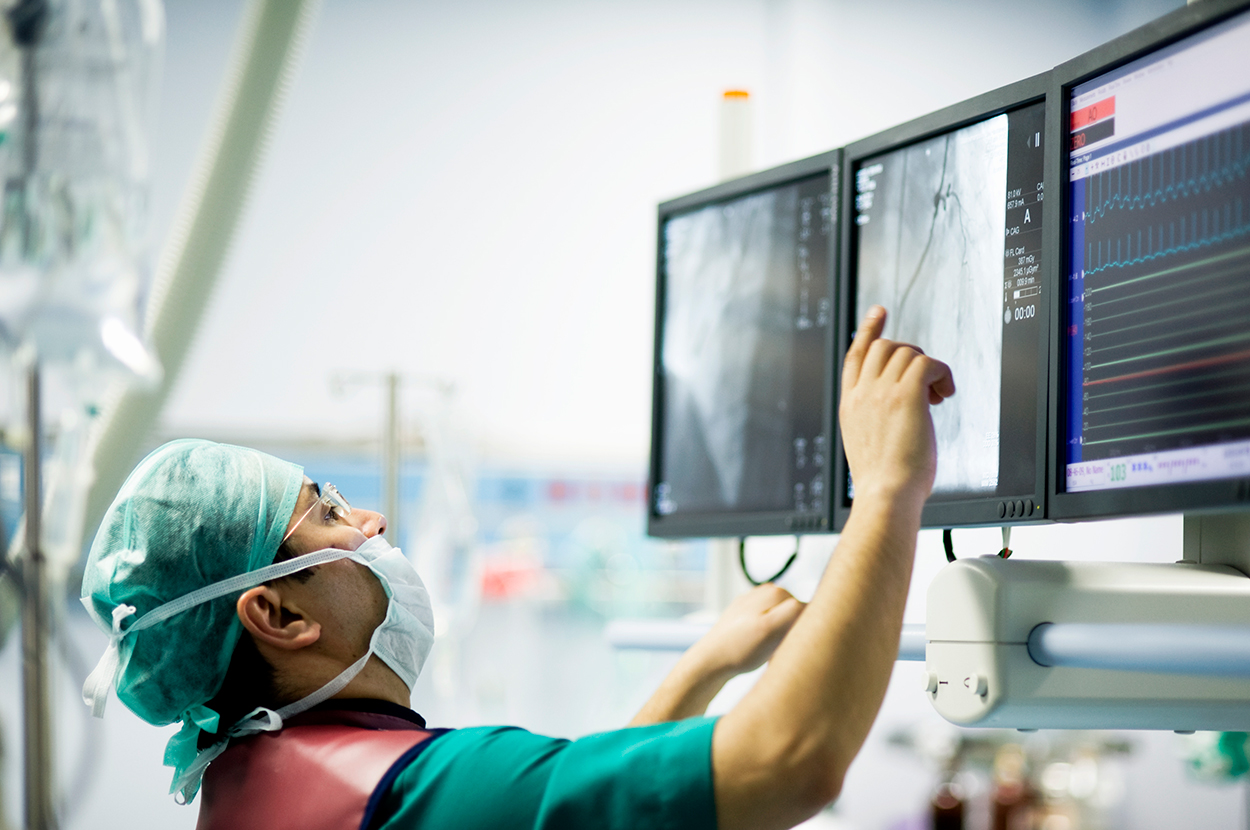The acronym ECG (previously known as EKG) stands for electrocardiograph. This device is responsible for detecting the electrical impulses associated with cardiac activity and then providing a readout of those signals. ECGs are used to diagnose and aid in treating certain cardiac-related issues and dysrhythmias. ECGs may also evaluate a person’s response to medication and disclose trends and changes in cardiac function.
Description
An ECG unit consists of electrodes and cables, typically referred to as “leads.” Each of the leads records different dimensions of the heart activity, thus producing ECG waveforms. These waveforms have specific recognizable patterns with names such as the QRS complex, T waves, and P waves. These waves differ in polarity (up or down) and amplitude (height).
Single-channel electrocardiographs record signals coming from a single lead, but their use is dominated by multi-channel electrocardiographs which record signals coming from two or more leads. A 12-lead ECG system contains three types of leads: unipolar or augmented, bipolar, and precordial.
Some ECG machines will provide an interpretation of the signals received from the leads. Medical practitioners may look at this interpretation but are typically trained to interpret the results independently.
Operating principle
ECGs can record even the smallest voltages of about 1 millivolt which are produced as a result of cardiac activity. The voltage difference between the electrodes is measured, which directly relates to the heart’s electrical activity.
Each of the leads records different dimensions of heart activity, thus producing ECG waveforms in which different waves like QRS complex, T waves, and P waves differ in polarity and amplitude. Interpretation of ECGs can show irregular heartbeats, heart damage, myocardial infarction (heart attack) and abnormalities related to drug use, among other things. ECGs are a valuable tool that medical providers use to diagnose a number of conditions.
Procedure
ECGs are conducted in both the inpatient and outpatient setting, depending on need. The procedure of performing an ECG varies on the condition of the patient but some of the steps are common among all practices.
Generally, the process of ECG is as follows:
- First, jewelry is removed to make sure that no object interferes with the readings of the ECG.
- Leads need to be placed on bare skin on the chest, and sometimes arms and legs. As such, ECGs are usually performed in a separate room for privacy.
- The patient will lie down flat on a bed or procedure table and is asked to not talk while undergoing the procedure.
- Electrodes are then attached to the chest, legs, and arms area (for a 12-lead ECG) and the lead wires will be connected to these electrodes.
- After this, the machine will be started, and it only takes minutes for tracing to be completed.
- After the procedure is done, the healthcare professional removes the attached leads carefully and prints the results.
Contact us
In case of urgent medical care assistance, AfterOurs Urgent Care offers immediate telemedicine services, where medical providers are available to offer assistance. Anyone who experiences signs and symptoms requiring urgent medical attention can simply book their appointment with AfterOurs Urgent Care to directly talk to an expert. If your medical issue is not appropriate for telemedicine, we will let you know and refer you to an in-person facility.
When to visit a doctor:
Treatment for hives is available at AfterOurs Urgent Care.
For more information on EKG or ECG, see the following website:

